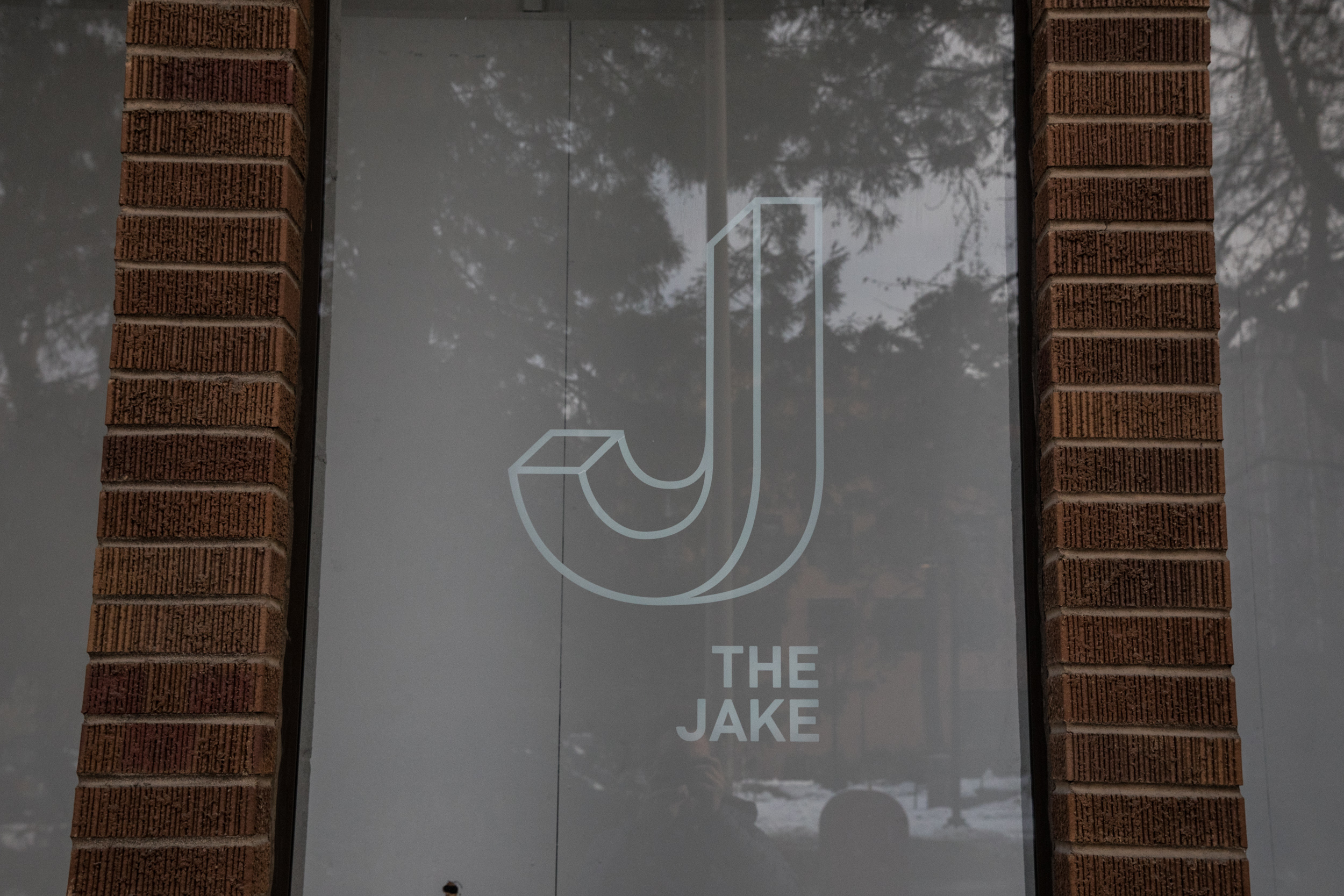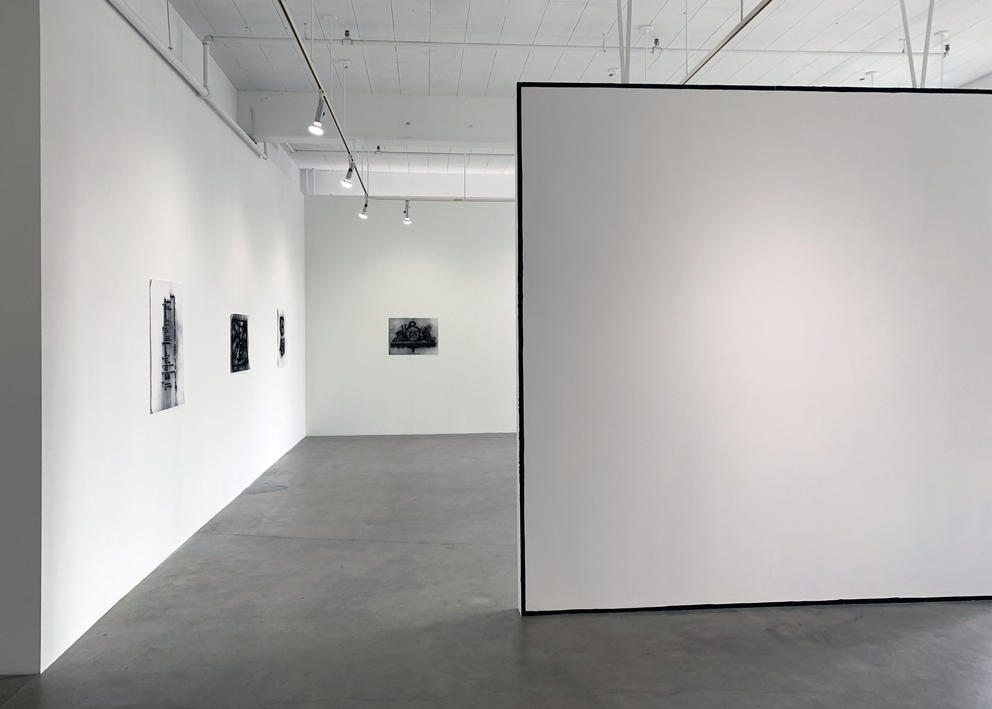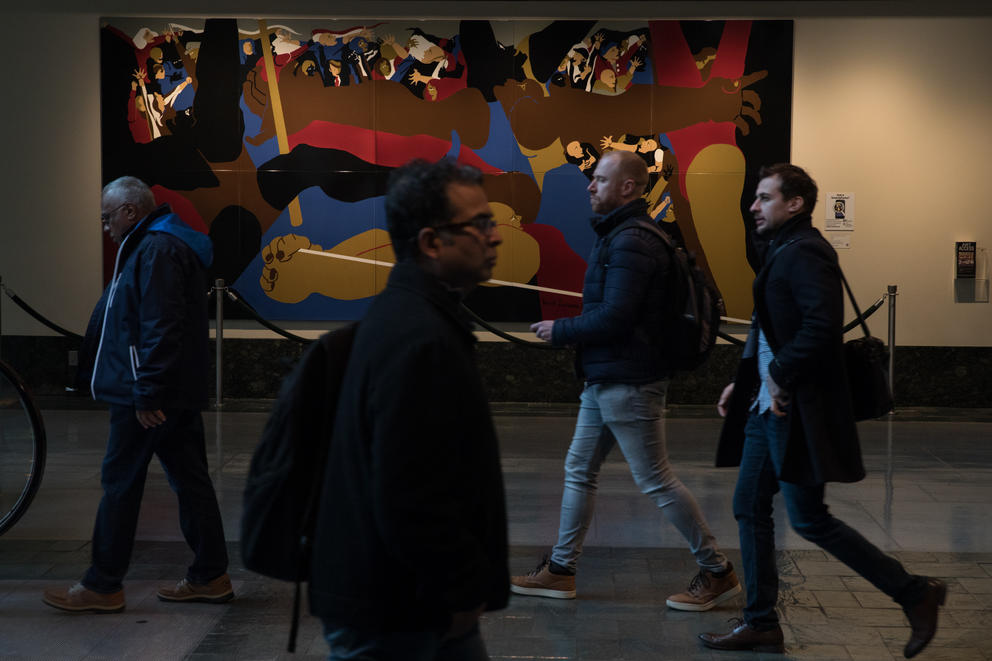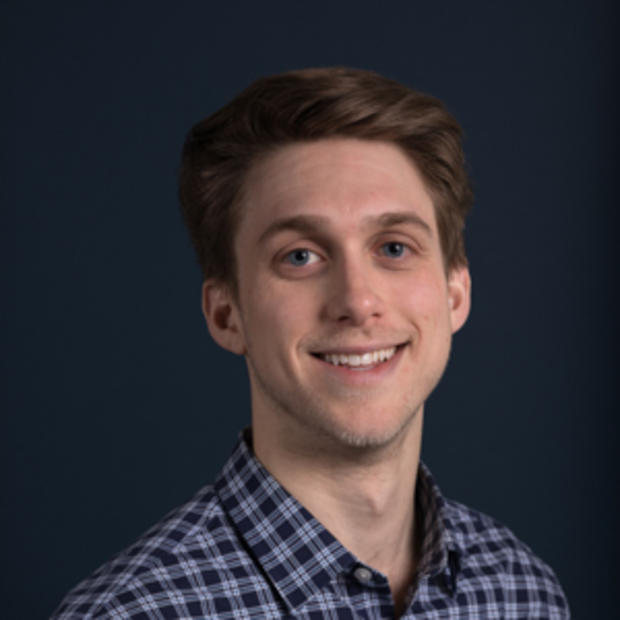For Lawrence, one of the most illustrious American artists of the 20th century, fame was an early and constant companion. But it never went to his head. Painting was paramount, same for his time at the university. “He was a lover of education, and he loved teaching,” says his former student, Barbara Earl Thomas, a celebrated Seattle artist in her own right. It is fitting, then, that in 1994 the UW inaugurated an instructional gallery in his name.

“I’m really happy that they honored him,” says Spafford, “but I think they could’ve named the entire school after him.”
The Jacob Lawrence Gallery is tucked away in the School of Art, on the northeast edge of the campus quad. Once through the school’s entryway, you head down two brown-tiled hallways, past advising offices, lockers, and walls adorned with school announcements and art posters. The gallery’s door is black, marked with a transparent J in the upper-right corner. A small plaque, acknowledging the land and waters of the Coast Salish Peoples, greets you. On a recent Friday, charcoal drawings by the Chicago-based artist Danny Giles were on display, starkly alive against white walls and a natural light softened by falling snow.
Adorning the gallery with his name was an attempt at honoring a quiet giant of our time, a Harlem son who found a home and good job in a small-town city in the Pacific Northwest, where he painted until his final days. He died in 2000 at age 82. On Saturday, the Jacob Lawrence Gallery will be celebrating a quarter century of art education, art making and critical art dialogue.
A master of modern figurative painting and devoted chronicler of Black American life, Lawrence and his wife, the artist Gwendolyn Knight, made Seattle home for nearly three decades beginning in the 1970s until his death. He is best known for his epic ensemble of paintings called The Migration Series, 60 small panels recreating a version of one of the most important stories in American history: the migration, book-ended by two world wars, of hundreds of thousands — and eventually millions — of African Americans from the Jim Crow South to an uncertain but beckoning American North, which promised, but could not always provide, work, suffrage and safety.
The paintings, and their subsequent reprinting in Fortune magazine in 1941, launched the 23-year-old Lawrence into the art world stratosphere. In the early ’70s, amid a climate of Black student activism pressuring the university to recruit a more diverse faculty, UW offered Lawrence a tenure-track position as a professor of art.
The gallery is first and foremost for students, a space to learn how art changes when it leaves the private studio and enters the public realm. There are practical concerns: space, light, the narrative contained in a physical arrangement. And, says gallery director Emily Zimmerman, “you’re thinking about how your work interfaces with the culture at large.” Both undergraduates and graduate students in the School of Art, Art History, and Design learn to display their work here. A team of student interns assist with gallery operations and the publication of its critical arts journal, Monday. The gallery’s educational mission was important to Lawrence. “He was incredibly beloved as a teacher,” says Zimmerman. “I think at the moment the gallery was founded, there was a real effort, a real desire to honor that.”
In this way, the gallery remains faithful to Lawrence’s legacy, Earl Thomas says. “The idea is that you make a space [in which] you’re nurturing artists,” she says. “You can fail.” Today, the gallery is educating a new generation of artists. “It’s a really important hub,” says UW sophomore Sandra Lantz, who works at the gallery. “Being able to encounter that gallery context so close to home … makes art in Seattle accessible, more reachable. It’s also a great place to start.”
In 2015, the gallery established an annual residency for Black artists from across the country. It provides residents funding, space, and time to make art during the month of January and then show the work in the gallery during Black History Month. Giles, whose charcoal drawings are hanging in the gallery now, is the current resident. Last year, it was C. Davida Ingram, a prolific Seattle artist, activist and thinker, whose exhibition, A Book with No Pages, featured portraits of local Black cultural workers against a backdrop of Coast Salish landscapes.
“I really just appreciated having a moment to use that space to dream a little bit,” she says of her time at the gallery. Asked to elaborate on Jacob Lawrence and the residency, Ingram’s impulse is to widen the frame. “I feel indebted to Gwen Knight Lawrence and to Janie Washington,” she says, naming women who were part of the same scene as Lawrence. She doesn’t stop there. She mentions other luminaries of color with a connection to Seattle: Barbara Earl Thomas, the literary and visual artist Carletta Carrington Wilson, the poet francine jay harris, the installation artist Theaster Gates, the interdisciplinary artist Romson Bustillo, the rising star from Tacoma, Christopher Paul Jordan.
“... [W]hen I think of Jacob Lawrence, I think of him paving a road so that these other artists can come to this really white city and this really beautiful space and understand they can exist and thrive and have a community — and also be in conversation with whiteness,” says Ingram. “Because I don’t want a version of Blackness that’s so prescribed that Black people feel like it’s a new version of the ghetto. Blackness is so expansive. It’s not constrained.”
Elevating artists of color is an important part of the gallery’s mission. In the last few years, says Zimmerman, “art spaces have been called upon to be more accountable and to redress some of the historic inequities and omissions. We’ve taken that call really seriously.”
Many of the artists featured in the gallery have channeled the roiling political chaos of our time. A 2017 exhibition entitled Untold Passages was curated in response to Donald Trump’s so-called travel ban; late last year, the London-based American artist Clotilde Jiménez showed a series of collages about sexual identity. Ingram’s work — a set of layered, philosophical inquiries about beauty, justice and the possibility of America ridding itself of abuse and violence — is fiercely political, too. In the portraits she showed for her residency exhibition, some of her subjects were holding birds of prey. “ ... That wasn’t without its own complexity,” Ingram says, “because those birds were all in captivity. I’m an abolitionist, so I tend to notice when things aren’t free.”
Ingram imagines a future when the Jacob Lawrence Gallery is better funded and “wired to the heart of Black Seattle.” She sees potential for the gallery to function as a kind of think tank, a place to explore solutions to urgent problems of displacement facing Seattle’s Black community.
In his signature abstract style, Lawrence painted the subjects of his Harlem upbringing. “I paint the things I know about and the things I have experienced,” he once said. “The things I have experienced extend into my national, racial and class group. So I paint the American scene.” Earl Thomas recalls a time when American culture momentarily cast his work aside. “People wanted him to make political statements,” she says. “He wasn’t that person. He painted it. He put it in his work, and that’s just the way he was.” Lawrence made paintings honoring the dignity of both extraordinary and ordinary fellow citizens, from the abolitionists Frederick Douglass and Harriet Tubman to the cabinet makers of Harlem and the many nameless migrants who traversed a nation in search of a better life.
For now, the gallery will continue to activate the political imagination. The 25th anniversary has been dubbed Playfulness as Resistance, a title that embodies values important to Lawrence — experimentation, social justice — and the urgency of an especially hostile moment in American life. Lantz, the UW sophomore, says it’s important to make space for people to have a good time. “That act of rest, the act of celebration, especially in these times, is very much a political one.”





